Table of Contents
The Baobab is a long-lived deciduous tree from the plant genus known as Adansonia. The tree is mostly found in the dry savanna areas of African grassland, south of the Sahara. However, despite that the tree is native to Africa, it can also be found in some parts of southwest Asia, and Australia.
A typical Baobab tree can grow as tall as 65 fts and is characterized by its enormous and sometimes deeply furrowed cylindrical trunk.
Today, even though the Baobab is naturally an enormous tree (can store up to 26 gallons of water in its trunk), many gardeners prefer the miniaturized form of the tree and would often raise it according to the Bonsai tradition.
If you are a Bonsai or houseplant lover, you can do the same in as much as you know all that is required to keep the tree small and healthy. You will find information about the care requirements, as well as some interesting facts about Baobab Bonsai in this bonsai guide.
General information
| Common name | Baobab |
| Scientific name | Adansonia digitata |
| Type | Tree |
| Family | Malvaceae |
| Native range | Sub-Saharan Africa |
| Zone | 10 – 12 |
| Height | 65 to 80fts |
| Width | 30 to 45fts |
| Fruit | Showy and edible |
| Flower | Showy |
| Bloom time | Seasoner bloomer |
| Bloom description | Creamy white |
| Maintenance | Low |
| Sun | Full sun |
| Water | Dry to medium |
| Temperature | 68 – 86°F |
| Soil | Well-draining and sandy soil |
Can we Bonsai Adansonia digitata?
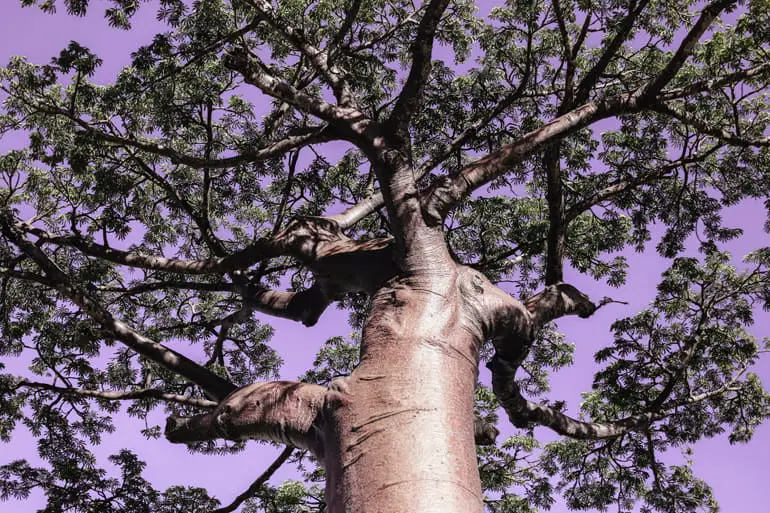
Yes, you can Bonsai Adansonia digitata (Baobab). The Baobab tree will make an excellent Bonsai specimen not just because of the strange structure and looks of the trees that will win the admiration of onlookers, but because the trees have done qualities like gnarled branches, water-filled trunk, and drought resistance, which makes it suitable a Bonsai specimen for both inexperienced and expert gardeners.
Is Baobab tree easy to Bonsai?
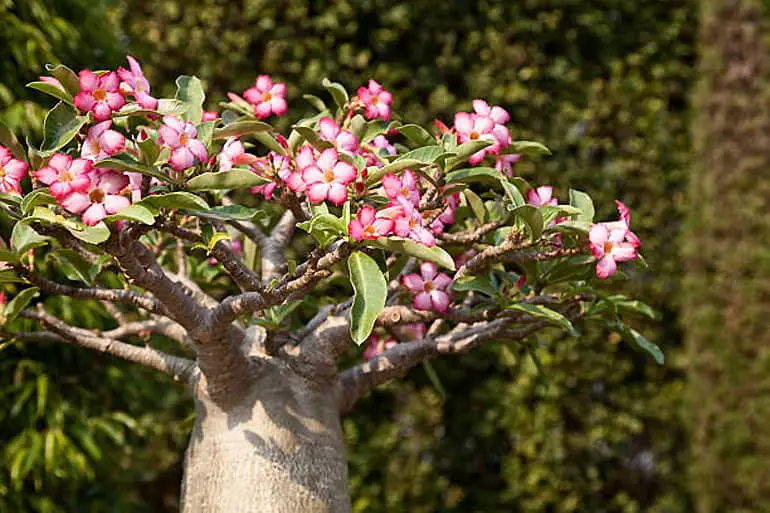
Yes, it is very easy to Bonsai a Baobab tree. Although the Baobab tree is not the type of tree species you will see often in Bonsai collections, it is very easy to create a miniaturized form of the tree. This is because unlike many of her tree species used for Bonsai, the Baobab requires low maintenance to keep the tree small and healthy. However, because it can take time before you can notice any progress on the tree since it has a slow growth habit, many shun the tree for faster ones even though the end product will be worth it.
Baobab tree Bonsai history
According to history, it is believed that the existence of the Baobab tree predates that of man and the splitting of the universe into continents which happened over 200 million years ago.
The tree is said to be native to the African savannah, especially in areas with extremely dry, and arid climates where the tree was seen as a symbol of positivity and life because the tree germinated in a place where nothing was expected to grow due to the harsh condition. Plus the Baobab tree provided people in its host environment with food, shelter, and water.
Today, the Baobab tree grows in about 32 African countries and you can also find them in some parts of Asia and Australia and is known throughout the world for its multifunctional purposes.
Baobab Bonsai scientific name
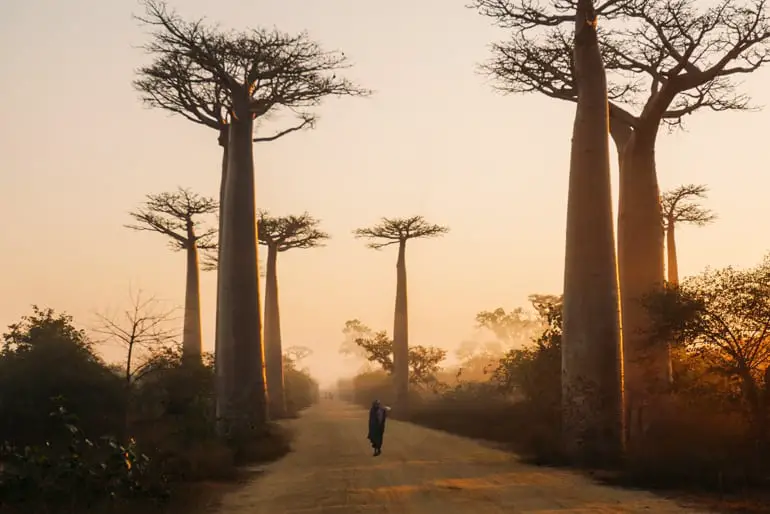
The scientific name for Baobab Bonsai is Adansonia digitata.
Are Baobab trees endangered?
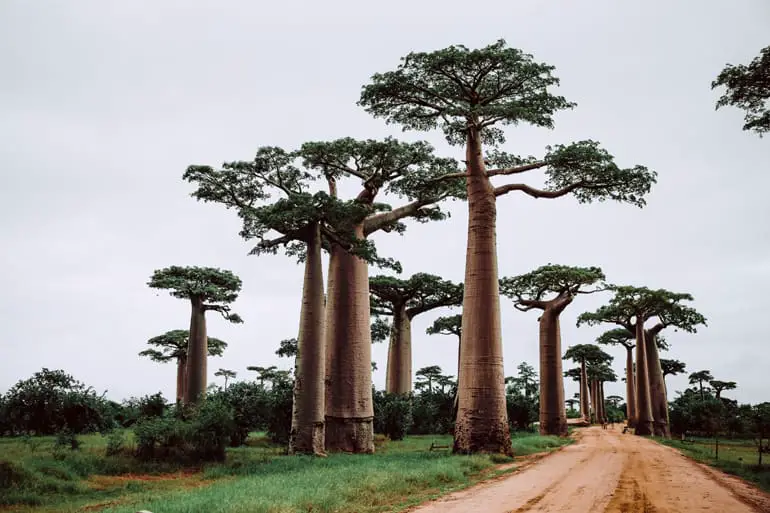
Yes, the Baobab tree is endangered. There are lots of reasons why the Baobab tree is an endangered tree species but the major ones are habitat loss and illegal hunting.
In African countries where these trees exist in numbers, people cut them down for commercial purposes drastically reducing their numbers and turning them into a scarce commodity.
Another reason is the continuous hunting down of animals, especially elephants that happen in most African countries where these trees are highly populated. These animals are responsible for spreading the seeds of the tree for new life to emerge.
And lastly, global warming has also contributed to the reduction of Baobab trees in the forest. The Baobab tree can survive dry climates because it can store a large amount of water in its trunk during the rainy season which it uses up during winter or dry season. Global warming has altered the rainfall pattern in the environment where this tree grows which has continued to affect its growth cycle.
Are Baobab trees hollow?
Yes, some Baobab trees are hollow. It is like Baobab trees to hollow out as they mature. The hollow found on some matured Baobab trees is big enough to shelter close to 20 or more people at once. In most cases, these hollows are caused by the removal of wood from parts of the tree. Sometimes this damage can be caused by animals, fungi, fire, or humans.
Are Baobab trees only in Madagascar?
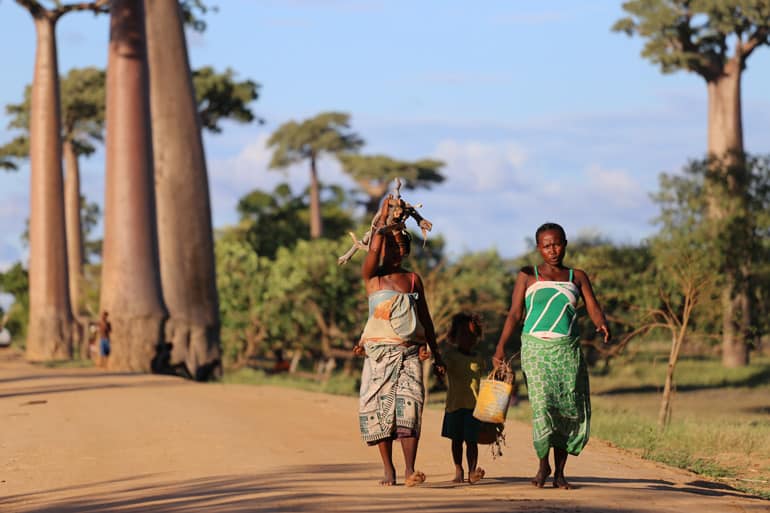
No, Baobab trees are not only in Madagascar. However, because 6 out of the entire 9 species of the tree are located in Madagascar, that is why most people think it is impossible to find the tree elsewhere. Madagascar is nicknamed the “country of Baobabs” because of the heavy presence of the Baobabs tree in the country.
Baobab tree Bonsai care
As said earlier, it is very easy to train Baobab as a Bonsai specimen. However, just like every other Bonsai specimen, Baobab Bonsai will also require some treatment before it can be successfully cultivated. You will learn how to properly treat your Baobab Bonsai trees in subsequent sections. Keep reading for details.
Baobab Bonsai temperature
Any temperature below 54°F or 12°C will affect the growth of your Baobab Bonsai and therefore if you are training your Baobab as an outdoor plant, it is advisable to take it inside once the temperature drops below this level.
The ideal temperature to raise a Baobab Bonsai is any level between 68-86°F or 20-30°C.
Baobab Bonsai fertilizer
Although Baobab will do just fine with little or no dose of fertilizer, however, it will benefit a lot from feeding it with a balanced fertilizer that is diluted half to its strength. To get the best out of the fertilizer, pour half a teaspoon of water-soluble 20:20:20 fertilizer into a gallon of water. Apply the mixtures over the soil once a month or two.
Baobab Bonsai pruning
One interesting thing about the Baobab tree is that it can be pruned at any time of the year. However, the best time to do your pruning is during is early spring before new growths start to emerge. Cut back all unattractive and weak twigs to encourage new healthy growth.
Pinch back all new shoots during late spring and summer if you notice that they are growing too long. This will allow the leaves to grow denser and give the tree the desired natural appearance. You can also wire younger branches and twigs, however, if at all it is to be done, it should be styled with scissors.
Baobab Bonsai repotting
It is best to repot your Baobab Bonsai tree once in two years, and this should be done during spring. Remove the tree from the old pot and prune about a third or 2/3 of the entire root mass of the tree making sure all dead or damaged parts are removed. Transplant the tree into another container that doubles the size of the tree’s root balls.
The new container must contain the mixtures of 30% salt-free sand and about 70% compost. Once the tree has been successfully transplanted, water the soil to help with the shock and keep the tree warm in the meantime.
Baobab Bonsai pest and diseases
The Baobab Bonsai tree especially the once trained as an outdoor plant is susceptible to most of the pests and diseases that commonly attack Bonsai trees like spider mites and aphids.
Treat any infestation with the appropriate pesticide or insecticide soap to protect your tree from suffering any damage.
If you want to learn what causes spider mites on bonsai or how to get rid of aphids permanently, please read our previous guide for more info.
Baobab Bonsai soil
It is best to plant your Baobab Bonsai tree in a well-draining and sandy soil. To make the soil as healthy as possible for your tree plant it in a mixture containing 3 parts of compost and 2 parts of sand in 1 part of the soil. Alternatively, you can also make use of premixed cactus soil for bonsai. This kind of soil encourages soil aeration and also prevents root rots. You can buy your premises cactus soil at any garden stores close to you.
Baobab Bonsai watering
Baobab stores a lot of water in their trunk, so you shouldn’t water them excessively as that could lead to root rot. Eater your Baobab Bonsai tree only once a month when it is its growing season. Always test the moisture level of the tree before watering: if it feels dry, or wet, but if not leave it and wait until it dries.
The winter is the dormancy period of the Baobab tree, and therefore, you do kit need to water them during this period. Doing so will lead to root rot and if the infection is not corrected on time, your tree may die.
Baobab Bonsai sunlight requirement
Baobab Bonsai trees love to grow in a warm place. Therefore, it is often recommended that the tree should be placed in a spot within the house where it can receive steady full sunlight for about 5 to 6 hours a day. Place the Baobab Bonsai container in a south or southeast-facing window.
Baobab Bonsai winter care
During winter, your Baobab Bonsai trees will become dormant and therefore, you must be careful about how it is treated.
During this time, make sure your tree stays indoors so that it can remain warm for a large part of the day. To do this, make sure the temperature is kept at a minimum level of 10°C. Keeping the temperature belie this level for a long time can cause your tree to have stunted growth.
Also, you do not have to water your tree during this period, and if at all you want to do it, it should be done sparingly. Doing this will prevent your tree from suffering from root rot.
Baobab Bonsai types
There are about 9 species of the Baobab tree in the genus Adansonia. However, of all these species, the African Baobab species is the most popular and most widely cultivated for Bonsai. Check below for a brief description of the tree.
African Baobab Bonsai
The African Baobab Bonsai tree is a deciduous succulent tree whose origin is traced back to the southern Arabia peninsula (Oman, Yemen) and the African continent (Madagascar). It is a long-live deciduous tree that is believed to have been in existence for over 2000 years. The tree can grow up to 2 – 25m tall and has a very broad, cylindrical trunk with a diameter of about 10 to 14m and a buttressed spreading base.
Can we grow Baobab Bonsai indoors?
Yes, you can grow Baobab Bonsai indoors. It doesn’t matter where you decide to place your Baobab Bonsai, it will survive. The key determinant of its placement is the temperature. If you live in areas with cold temperatures, it is advisable to raise your Baobab tree indoors because the tree would require you to stay warm almost all the time.
If you live in warmer areas, it is best to take your Baobab Bonsai tree inside once the temperature drops below 54°F if planted as an outdoor plant.
Is Baobab Bonsai safe for cats?
Yes, Baobab is safe for cats. If you are keeping your Baobab as an indoor plant, the last thing you have to be worried about is the safety of your dog or cat around the tree because it is safe for them even if they consume the fruit or leaves of the tree.
Why my Baobab Bonsai losing leaves
Baobab drops their leaves after rainy seasons as part of their growing cycle, so if this is what you are experiencing do not panic your Baobab is in good condition.
Also, during winter, they shed most of their leaves as they are usually dormant during this period. Whichever your case might be, do not worry, your Baobab tree will grow back all the leaves in about 3 to 4 months.
How to grow Baobab Bonsai from seed
A Baobab Bonsai tree can either be propagated by seed or by cuttings. However, most people prefer seeds so that they can monitor the progress of the trees right from the young stage. You will see information on how to start your Baobab Bonsai tree below.
- Slightly scratch the Baobab seed
- Put the scratched seeds in warm water and leave them soaked for about a day or 2.
- Remove the coats of the seeds with your fingernails.
- Put a moist towel in a bowl that has a lid and place the seeds on the towel and cover it for another 2 days.
- Mix regular soil with coarse river sand. You can use cactus soil in place of regular soil.
- Pour the soil in a container that is at least 10 cm high.
- Place the on the soil and cover it with a thick layer of the coarse river sand. The layer should be about 2cm thick.
- Water the seedlings regularly without getting them saturated. Water it every 2 or 3 days with rainwater. You can use other water too.
- Baobab loves to stay warm and therefore you should place it where it can receive adequate sunlight to stay warm. The temperature around the seedlings must not drop below 20°C.
How old can a Baobab Bonsai tree get?
Baobab trees are long-lived trees and can live for up to 2000 years.
Is Baobab a succulent tree?
Yes, Baobab is a succulent tree. Baobab has the reputation of being the largest succulent tree in the world.
![Pittosporum Bonsai [Pittosporum Tobira]](https://www.bonsai-express.com/wp-content/uploads/2022/05/Pittosporum-Bonsai-365x200.jpg)
![Sorbus Bonsai [Sorbus Aucuparia]](https://www.bonsai-express.com/wp-content/uploads/2022/05/Sorbus-Bonsai-365x200.jpg)
![Tsuga Bonsai [Tsuga Canadensis]](https://www.bonsai-express.com/wp-content/uploads/2022/05/Tsuga-Bonsai-365x200.jpg)
![Tamarix Bonsai [Tamarix Ramosissima]](https://www.bonsai-express.com/wp-content/uploads/2022/05/Tamarix-Bonsai-365x200.jpg)